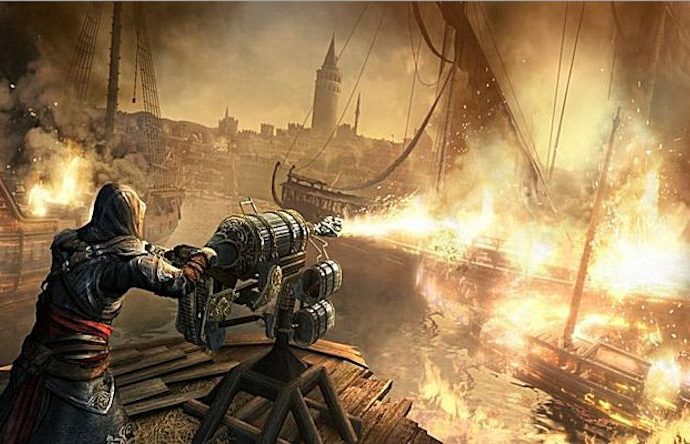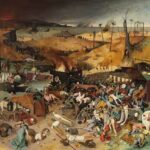For five successive years between 674 and 678 the Arabs conducted campaigns on a steady pattern. Between spring and autumn each year they besieged the walls and mounted naval operations in the straits that involved running battles with the Byzantine fleet.
Both sides fought with the same types of oared galleys and largely with the same crews, as the Muslims had access to the seafaring skills of Christians from the conquered Levant. In winter the Arabs regrouped at their base at Cyzicus, repaired their ships, and prepared to tighten the screw the following year. They were in the siege for the long haul, secure in the belief that victory was inevitable.
And then in 678 the Byzantine fleet made a decisive move. They launched an attack on the Muslim fleet, probably in their base at Cyzicus at the end of the campaigning season – the details are either unclear or were deliberately suppressed – spearheaded by a squadron of fast dromons: light, swift-sailing, many-oared galleys.
There are no contemporary versions of what happened next, though the details can be deduced from later accounts. As the attack ships closed on their opponents, they unleashed, behind the conventional volley of winged missiles, an extraordinary stream of liquid fire from nozzles mounted high on their prows. Jets of fire burned the surface of the sea between the closing vessels, then caught hold of the enemy ships, falling “like a flash of lightning on the faces in front of it.”
The explosion of flame was accompanied by a noise like thunder; smoke darkened the sky, and steam and gas suffocated the terrified sailors on the Arab ships. The firestorm seemed to defy the laws of nature: it could be directed sideways or downward in whatever direction the operator wished; where it touched the surface of the sea, the water ignited. It seemed to have adhesive properties too, sticking to the wooden hulls and masts and proving impossible to extinguish, so that the ships and their crews were rapidly engulfed in a propulsive torrent of fire that seemed like the blast of an angry god. This extraordinary inferno “burned the ships of the Arabs and their crews alive.”
The fleet was destroyed, and the traumatized survivors, “having lost many fighting men and received great injury,” lifted the siege and sailed home. A winter storm wrecked most of the surviving ships while the Arab army was ambushed and destroyed on the Asian shore. Discouraged, Muawiyyah accepted a thirty-year truce on unfavorable terms in 679 and died, a broken man, the following year. For the first time the Muslim cause had received a major setback.
The chroniclers presented the episode as clear evidence that “the Roman Empire was guarded by God,” but it had, in truth, been saved by a new technology: the development of Greek fire.
The story of this extraordinary weapon remains the subject of intense speculation even now – the formula was regarded as a Byzantine state secret. It seems that at about the time of the siege, a Greek fugitive called Kallinikos came to Constantinople from Syria, bringing with him a technique for projecting liquid fire through siphons. If so, it is likely that he built on techniques of incendiary warfare widely known throughout the Middle East.
The core ingredient of the mixture was almost certainly crude oil from natural surface wells on the Black Sea, mixed with powdered wood resin that gave it adhesive properties. What was probably perfected in the secret military arsenals of the city over the length of the siege was a technology for projecting this material. The Byzantines, who were heirs to the practical engineering skills of the Roman Empire, seem to have developed a technique for heating the mixture in sealed bronze containers, pressurizing it by means of a hand pump, then emitting it through a nozzle, where the liquid could be ignited by a flame. To handle inflammable material, pressure, and fire on a wooden boat required precision manufacturing techniques and highly skilled men, and it was this that comprised the true secret of Greek fire and destroyed Arab morale in 678








